Ultimate Guide: What to Do in Hoi An Vietnam
Hoi An has become our favorite destination in Central Vietnam, if not all of Southeast Asia. Its old world charm, recognized with a UNESCO World Heritage designation, variety of restaurant options, and full moon lantern festivals draw visitors from around the world to this unique port town.
While tourism does overwhelm certain parts of Hoi An sometimes, we still find it very worthwhile to visit.
In this post we’ll share:
- Map of places to visit – get the interactive version free via e-mail
- 3 absolute “must do’s” for first time visitors
- Recommended best things to do in Hoi An
- Local food to try in Hoi An
- Where to stay and how to get around
Notes: This post was updated March 2024, originally published 2016. Our article contains affiliate links, which means if you use our links and make a purchase, we may receive a small commission at no additional cost to you. (We only recommend things we love and believe in.)
After our first stay in Hoi An back in 2016, it became one of our favorite places to visit. We started returning for months at a time. We have stayed in Hoi An five times and counting, about 9 months in total.
Map of Places to Eat and Things to See in Hoi An
We created an interactive map of all the attractions and restaurants in Hoi An that we love – including some we didn’t have space to mention in this post. You can click on each map point to see more details (pictures, prices, and our tips).
Get our Interactive Map + Hoi An Travel Guide
Table of Contents
Top 3 Must Do Hoi An Activities
Whenever someone visiting Vietnam asks me what they should do in Hoi An, these are the top three things I think every first time visitor absolutely must do:
1. Explore Hoi An Ancient Town
By far the biggest attraction in Hoi An Vietnam is the area called Ancient Town, a.k.a Old Town. I’ve highlighted this area on our interactive map.
Hoi An’s Ancient Town has earned a UNESCO World Heritage designation and “most charming city in the world” by Travel + Leisure in 2019.
This well-preserved trading port dates from the 15th to the 19th century with influences from China, Japan, and Europe. Today, the area is full of shops and restaurants with endless opportunities for beautiful photos.
Some highlights of Ancient Town include the Japanese Bridge (under construction in 2024), traditional temples, local markets, lantern-lined pedestrian streets and riverside. More on these later.
Full disclosure: Your experience of Ancient Town will vary drastically depending on the time of day you visit. Even during the time we’ve been coming here (since 2016), the area has continued to change and get more crowded.
In the evening, tour groups are brought in the by bus load. Groups of 20, 30, or more follow their guide en masse, which quickly fills the streets.
Everyone should witness the beauty (and buzz) of the illuminated Ancient Town in the evening at least once.
However, to truly enjoy Ancient Town without crowds of tourists, visit around 7am. Before the souvenir shops are open, only local people can be found shopping for produce and poultry at the market or picking up breakfast from a street vendor.
How To: Use our interactive Hoi An map to make your own self-guided walking tour.
2. Explore the outskirts of Hoi An
While Ancient Town is the main draw for tourism, the rest of Hoi An provides foreigners an accessible immersion into the beauty and culture of everyday Vietnam.
Natural beauty, like the rice paddies, vegetable gardens, small farms, and the beach are all within easy reach.
Walking or riding through the neighborhoods of Hoi An gives a glimpse of family shrines, backyard chickens, neighborhood coffee shops, and living rooms that open to the street. We encourage visitors to observe local life this way, while of course, always being respectful and conscious of boundaries.
If you’re only in Hoi An for 1 or 2 days, I recommend either riding a bicycle around the rice paddies and outer neighborhoods of Hoi An (see our recommended bike route) or booking a half day motorbike tour.
If you have more time in Hoi An, there are plenty more historic and cultural experiences, from archeological temple ruins to artisan villages, that make great day trips from Hoi An. Read on for details.
How To: Use our interactive Hoi An map to follow our self-guided cycling route or book a guided tour.
We recommend:
Mr. Phu Motorbike Tour Adventures
Bicycling Tour Around Hoi An Countryside
3. Eat in Hoi An!
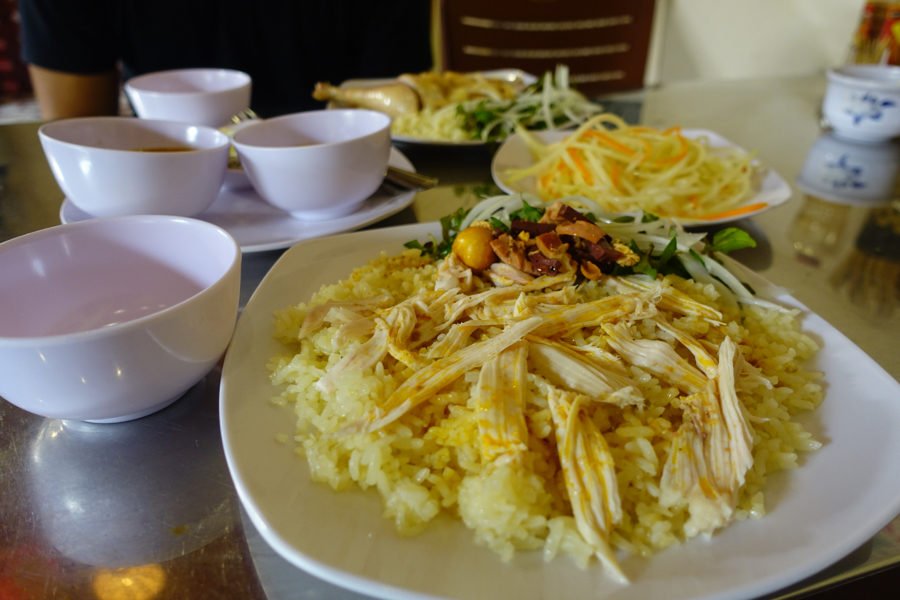
In Hoi An, you can find a huge range of dining options, from cheap street food to high end restaurants and everything in between. There’s hyper-local cuisine, like noodles that are only made in Hoi An, as well as Central Vietnam regional specialties and Vietnamese dishes from the North and South.
Plus, there are plenty of other international cuisines, too – burgers, sushi, pizza, Greek, Indian, Italian, French, Thai, etc. There are quite a few vegetarian and whole foods vegan restaurants as well.
Food in Hoi An is generally safe to eat. Hygiene standards vary when it comes to street food stalls, but we never worry about getting sick when dining out at local restaurants. Yes, we eat fresh, raw vegetables and herbs here, though we only drink bottled water.
Plenty of Hoi An restaurants cater to tourists (or a mix of Vietnamese and foreign clientele). Because TripAdvisor is so revered here, there’s a natural accountability through online reviews.
How To: Use our interactive Hoi An map to find our recommended restaurants and read our guide to eating in Hoi An.
Explore Hoi An Food with a Local
Looking for a local guide to take you off the beaten path and introduce you to authentic, local foods in Hoi An? You won’t find a better experience than this Hidden Gems Hoi An Food Tour.
Not only will you enjoy your fill of Hoi An’s famous specialties and lesser-known treats, you’ll also meet local producers, learn about their traditional methods that have passed down for generations, and explore back alleys you’d never find on your own.
Book your Hidden Gems tour through Viator >
More of the Best Things to Do in Hoi An Vietnam
Now that we have our priorities straight on the top must do’s, let’s dive into more detail of things to do in Hoi An Ancient Town and then expand our list to other activities.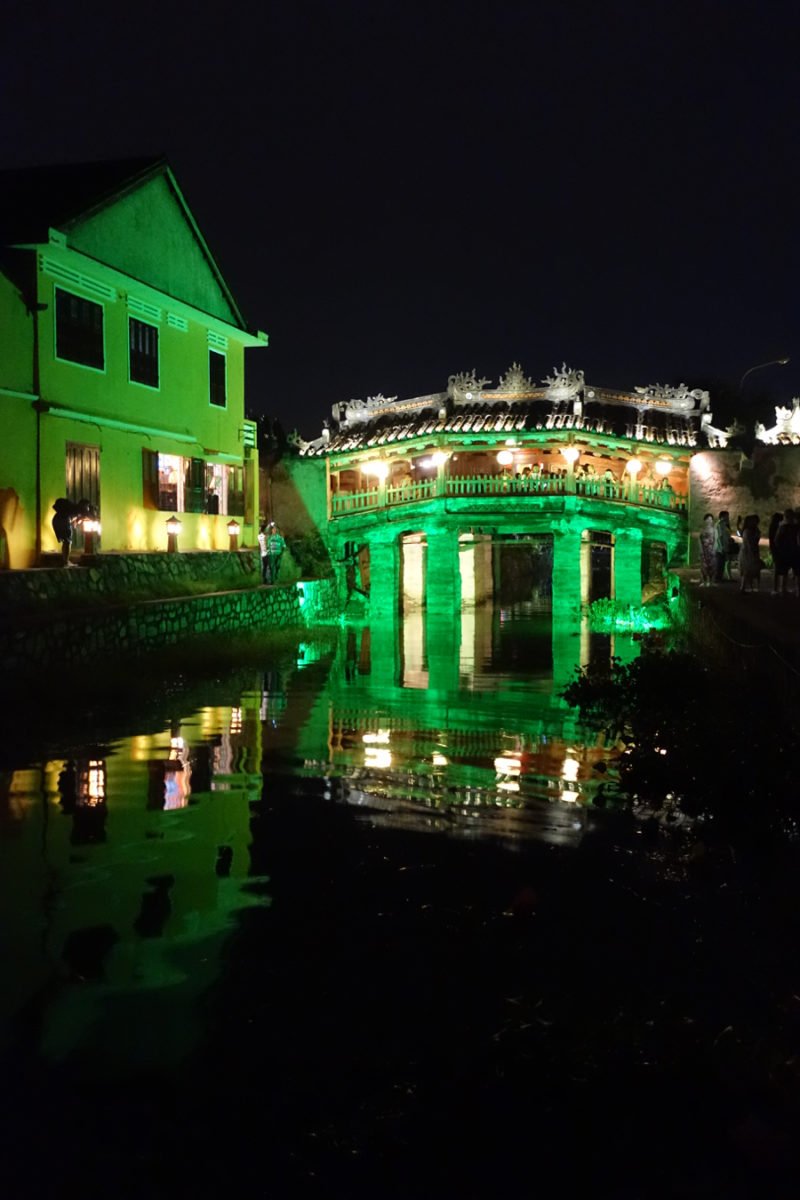
Walk and Shop in Hoi An Ancient Town
Hoi An’s UNESCO World Heritage buildings reflect influences from China, Japan, and Europe – such as the Japanese Bridge pictured above.
You could spend at least half a day wandering the golden-walled streets, shops, and historic sites.
It’s a photographer’s dream, though the area gets busy as evening comes. Colorful lanterns illuminate the streets but crowds of tour groups make getting around less fun at night.
As mentioned before, the nicest time to visit Ancient Town without tourist crowds is around 7am.
The Ancient Town area north of the Thu Bon River has booths selling entrance tickets (120,000 VND for foreign visitors) as you enter the UNESCO World Heritage zone.
Enforcement of the entrance fee has varied over the years. Signs around Hoi An encourage purchasing the ticket to support restoration and upkeep of the ancient town. During our 2023 visit, tickets were not required to enter Old Town, at least for individuals visiting without a tour guide.
The ticket apparently doesn’t expire, so if you get one, keep it on you just in case you’re asked for it.
The ticket covers entrance to your choice of 5 out of the 20+ heritage sites:
– Japanese Covered Bridge museum
– Hoi An Traditional Art Performance House
– Several traditional Vietnamese Old Houses
– Chinese Assembly Halls
– Museums: Sa Huỳnh culture, Trade ceramics, Folk culture, Traditional medicine and History and culture
– Temples and pagodas, family chapels, and communal houses of worship
Explore the local market in Ancient Town
Visiting local markets is always one of our favorite activities when we travel. Hoi An’s produce market is on the east end of the Old Town, bordered to the south by the river.
One of our homestay family members took us the first time as part of a cooking class, and we returned frequently to buy our new favorite fruits: bon bon (a.k.a langsat) in the Fall; and rambutan in early Spring.
There is bicycle parking next to the market for a small fee.
Heads up! Motorcycles and bicycles drive through the narrow alleys around the market, so stay alert when you’re wandering around.
P.S. We put together an interactive map of all these recommendations, including bicycle parking locations, a cycling route, and all of our best tips in an ultimate Hoi An Travel Guide.
Purchase here: Interactive Map + Hoi An Travel Guide
Shop for souvenirs
Souvenir shops are plentiful in the Old Town and surrounding areas. Most shops don’t display prices because you are meant to bargain.
You can buy:
– clothing
– woodwork
– jewelry
– handicrafts
– collapsible lanterns
– leather goods
– paintings
– many other gift items
Quality and craftsmanship vary, so you can find very cheap souvenirs as well as high-end crafts at near-Western prices.
We recommend:
Reaching Out Arts & Crafts – truly beautiful crafts made by local artists with disabilities
Get a custom outfit made at a Hoi An tailor shop
Tailors are another popular draw to Hoi An. Nearly every street corner has at least one tailor shop – if not three or four.
If you’re in the market for made-to-order, custom clothing, then Hoi An is the place to get it quickly and affordably. You can have them tailor something you already own, copy a style from a photo, or create an outfit from scratch.
Not all tailors provide equal quality or choice, and some outsource the work. Full custom suits can be made for $60 to $100, or more for higher quality materials. When we got a quote for a fitted jacket only, one shop was asking $180. Quick resizing of shirts is about $5.
Hoi An tailors are accustomed to visitors needing garments finished quickly. Plan to visit early in your trip and allow 3-4 days for more complex designs that might need multiple adjustments.
We recommend:
Two Ladies Tailor on Trần Hưng Đạo Street
View the portraits at Precious Heritage Gallery
There are a number of art galleries in Hoi An. Our favorite gallery has the captivating portraits by French photographer, Rehahn at the Precious Heritage Art Gallery and Museum. Entrance is free.
How to: Stop by 26 Đường Phan Bội Châu from 8am-8pm
Experience Hoi An’s lantern festival
Lantern festivals take place during the full moon each month. To be honest, I wouldn’t go out of my way to visit during lantern festival anymore.
Colorful lanterns adorn the streets of the Old Town year-round, so you can always get picturesque photos any time you go.
But when the moon is full, building lights are dimmed to highlight the lanterns. Floating lanterns are sold for about 25 cents, the idea being that you make a wish and release it into the river.
It’s actually become quite a commercial event. This used to be the busiest night in Ancient Town each month, but we’ve noticed that the floating lantern tradition has become a daily occurrence for the benefit of tourists.
Boats and canoes illuminated with lanterns have also become a regular nightly activity, taking tourists on the river for about 20 minutes for a flat fee. We’ve heard that you may be pressured for a tip at the end.
Sometimes there’s also live music on the streets. Many visitors find restaurants with patios where they can watch all the activity while enjoying dinner or drinks.
Relax at Hoi An’s beach
The beach is just a bike ride away from Hoi An. There are actually two beaches – An Bang and Cua Dai. Unfortunately, both beaches have eroded and depending on the time of your visit, may be found in different states of restoration.
The bike ride from town to the beach is easy.
Note that you cannot bring bikes onto An Bang beach, but you can park a block away from the entrance for 5,000 VND each (about 20 cents) or for free behind some of the restaurants.
Many locals come to exercise and swim at the beach in the mornings and you can see the basket-like boats that are used for fishing in the ocean.
There are also many beach-side seafood restaurants and cafes at An Bang with beach chairs, palapas, and places to get massages nearby.
Cua Dai beach has a small shop, volleyball net and a few vendors selling coconuts and other refreshments. As of 2023, Cua Dai beach is still much less developed for tourism compared to An Bang.
Explore the outskirts of Hoi An by bicycle
 Exploring by bicycle is easy on the budget since many homestays and hotels provide bikes for free – otherwise, rentals are usually just a dollar or two for the day.
Exploring by bicycle is easy on the budget since many homestays and hotels provide bikes for free – otherwise, rentals are usually just a dollar or two for the day.
We’ll talk more about getting around by bicycle later on, but we often chose biking over walking because of the heat. On a bike you get a nice breeze and it takes little effort because Hoi An is fairly flat.
Here are some of the places around Hoi An you can visit easily by bicycle:
– The Kim Bong wood carving village is across the river via a narrow, metal bridge. There, you’ll find some local wood shops and handmade souvenirs.
– We also took a leisurely ride on Cam Nam island, starting from the market. There aren’t any big attractions but it’s nice to explore and relatively quiet in the middle of the day.
– An Bang beach is another good destination to visit by bike.
– Tra Que vegetable village and the surrounding rice fields are usually quiet and relaxing – this can be done on the way to the beach as well.
– Van Duc pagoda is a Buddhist temple and monastery with nice grounds to explore. Be sure to dress appropriately with covered shoulders and knees.
How To: Follow our self-guided cycling route, included with our Interactive Map + Hoi An Travel Guide
Get a massage
Hoi An has a large number of spas that offer beauty and massage services. One hour body massages can be found for $12 and up. Some spas will coordinate transportation pick up and drop off from your accommodations.
Massages in Vietnam tend to be a little less intense than Thai-style, though you can still find Thai massages or those with strong pressure and stretching here. Relaxing oil massage and foot massages are also common.
How To: Find our spa recommendations on our interactive Hoi An map
Try a cooking class
Many homestays and restaurants in Hoi An offer cooking classes. The most budget friendly is probably cooking with your homestay hosts – ours was $5 per person – and it’s a great way to get to know the family better.
We also enjoyed a cooking class, market visit, and boat ride with a local family restaurant. This half day experience helps you see many aspects of daily life for locals in Hoi An.
After purchasing vegetables from the market with our guide, we returned to her home restaurant via a peaceful basket boat. Then we prepared a set meal together and dined on our creation. Afterward, the teacher emailed us the recipes.
Check out local cooking classes here >
Try Vietnamese coffee and tea
Locals of Hoi An love to hang out in coffee shops, and there are all different kinds in town.
The most basic coffee shops have short chairs and a small menu – you’ll see them full of young Vietnamese men smoking, sipping coffee, scrolling on their phones, or having a chat.
Other cafes have a little more atmosphere and are popular for group gatherings – our personal favorites are Cong Ca Phe and Magnolia (a.k.a. Moc Lan) on the river, where we would sometimes go to work.
We like the local white coffee, also called milk coffee – strong, small, with sweetened condensed milk. For a special treat, try coconut coffee – it’s like a coconut milk snow cone with coffee poured over.
And though Hanoi is really the best place to get sweet, creamy egg coffee, it is now more frequently found in Hanoi as well.
For higher-end and Western style coffee shops, there’s Highlands Coffee, Cocobox (pictured above), and several Hoi An Roastery locations.
If you’re looking for a tasting experience with specialty coffee or tea to take home, check out Hoachampa Coffee and Tea or the Reaching Out Teahouse, both in Ancient Town.
Reaching Out is part of a social enterprise that provides meaningful employment for people with hearing impairments, so the cafe is meant to be silent/whisper-only and word blocks are provided to help communicate with the staff.
Make your own souvenir at a Lantern Making Class
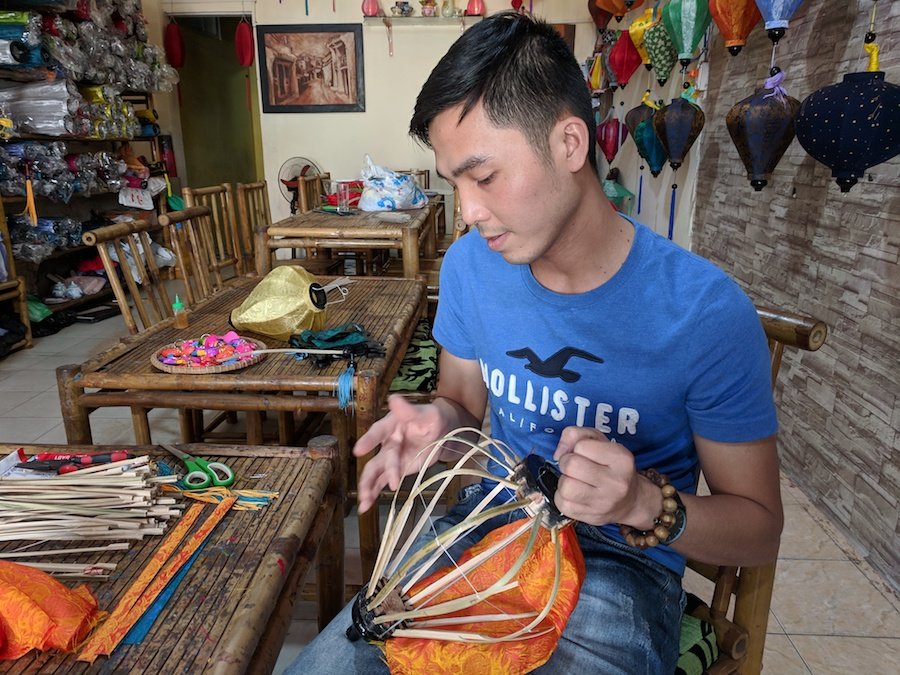
Hoi An’s lanterns are an icon of the town. At local lantern workshops, you can learn the delicate process of making lanterns with bamboo and silk cloth. And thanks to the expert guidance of the local craftsman, you can make a lantern yourself.
Basic lanterns take at least 2 hours to complete. The teacher will guide you through the steps and help make any necessary adjustments. In the end, you come away with a handmade souvenir you can take home (the lanterns fold up into a cylinder for transport).
We really enjoyed our private class with Hoi An Handicraft Tours.
We recommend:
Lantern Making Class with Hoi An Handicraft Tours
Hoi An Photo Shoot with a Personal Photographer
Ancient Town is one of Vietnam’s most photogenic destinations, so it’s no surprise that photography is one of the most popular activities here.
If you want to take your photo memories to another level, you can hire a local photographer to do a photo shoot. Just book a session online, have fun posing around town, and you’ll get hundreds of digital images to keep.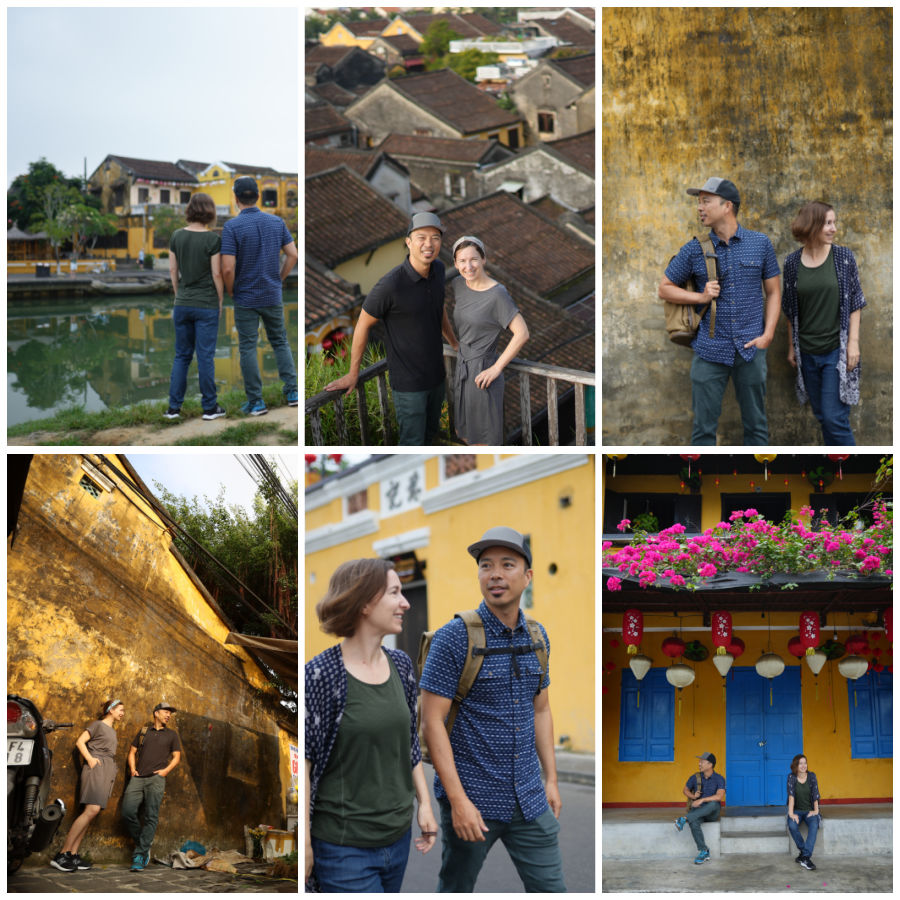
We needed updated photos for our website that included both of us (not just selfies), so we worked with Trung of Hoi An Photographer and can recommend their service.
Schedule a photo shoot with Hoi An Photographer here >
Cowork at Hub Hoi An
For remote workers and digital nomads, Hoi An is a great place to work online. To connect with a community of international nomads and enjoy one of Vietnam’s most beautiful workspaces, check out the coworking space at Hub Hoi An.
The Hub reopened in a new location (very close to the original spot) in 2023, and the space is even more stunning.
You can purchase a monthly membership as well as weekly, daily, or flex passes. Set up at a desk indoors or in open air, enjoy free coffee and tea, and take advantage of blazing fast wifi (300 MB upload and download).
The Hub is just as much about community as it is about a place to work. They often host community lunches, game nights, or go out to dinner together. They can also set you up with a nearby homestay, motorbike rental, and other local business discounts so it’s easy to hit the ground running.
Day Trips from Hoi An
Hoi An is a great base to do some pretty cool day trips. Two of the most popular day trip destinations are My Son Sanctuary and the Marble Mountains.
Both of these day trips can be visited independently, as part of a motorbike tour, or through a guided day tour by van or bus.
The My Son temple ruins are an archeological site about half an hour away by motorcycle. There is a small museum with English translations and then little shuttles that drive you out a mile or two to the ruins (it’s also a nice walk as long as it’s cool out).
There are a number of different plots with temples, and you can walk through all of them within an hour. Sadly, many of the temples were heavily affected by the Vietnam-American war, and you can even see craters from the places where bombs landed.
Even so, several areas have been preserved. Hiring a guide on site or joining a group tour is a good idea to add more context when you visit My Son.
Marble Mountains are both a natural and cultural site, located between Hoi An and Da Nang.
It’s hard to describe. They’re karst formations that pop out of otherwise flat land. You can walk around and through various caves, which are used as sacred temples and hold historical significance even from the Vietnam-American War.
You can also climb to some nice viewpoints. The area also has many marble and stone statue shops around here, which are interesting to check out as well.
You might also like this post: Best Day Trips from Hoi An Vietnam
What to Eat in Hoi An
Central Vietnam, and Hoi An itself, have some unique regional cuisine that can’t be found (at least not widely) in other parts of the country.
Below are some of the local specialties you should definitely seek out.
For a more detailed food guide, see our post on Best Food and Hoi An Restaurants.
- Cao Lau noodles
- Mi Quang noodles
- White Rose dumplings
- Bahn Xeo savory pancake
- Bun Thit Nuong (noodles)
- Com Ga chicken rice
- Banh Mi sandwiches
- Vietnamese Coffee
Restaurant Recommendations in Hoi An
Our complete list of restaurants, cafes, and street food can be found on our interactive map.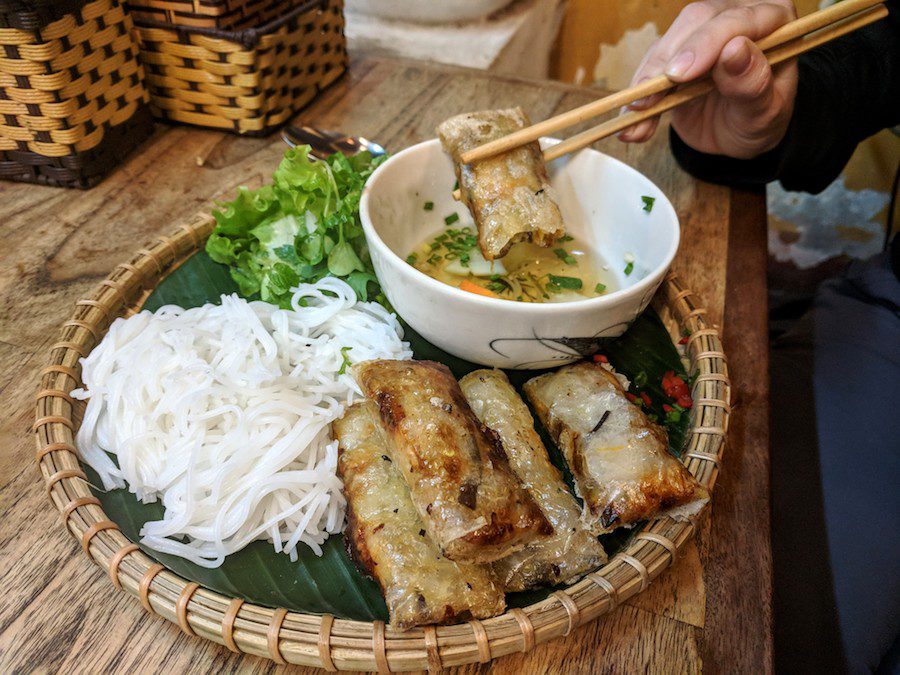
Com Linh is a well-rounded restaurant for Hoi An food. It serves all the local specialties, so we recommend it as a good entry-level place for first time visitors.
The small restaurant is clean with actual sit-down tables, English menus, and most staff understand English as well. Conveniently located on the edge of Ancient Town, yet it maintains reasonable prices. The food is tasty, and we’ve never had a dish we didn’t like there.
From our research, there are three popular shops in Hoi An for banh mi sandwiches, and everyone has their own opinion about which is best. After multiple taste tests, we’ve determined that Madame Kahn is our favorite.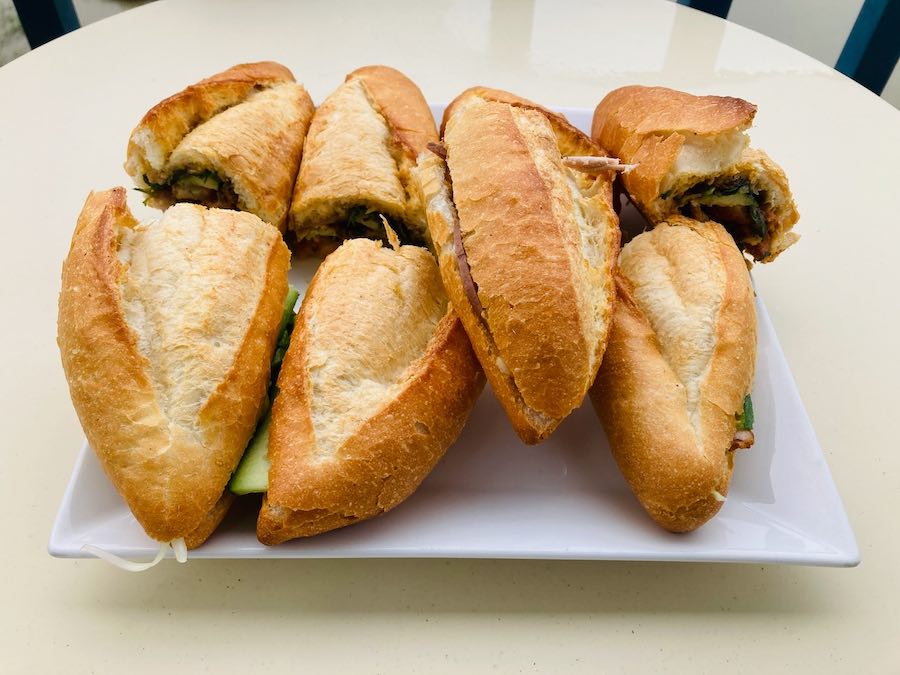
Madame Kanh Bánh Mì Queen originally gave you just one option: with or without chilis. Since then, the menu choices have expanded, and she’s moved into a nicer storefront.
Our favorite “Mixed” sandwich comes with egg, pate, pork, and pickled veggies. It’s slightly sweet, truly scrumptious, filling and definitely worth the 30,000 VND. You can eat in or take away – and it gets pretty busy during peak meal times, but there’s additional seating on the second floor.
For many more restaurant recommendations, including Vietnamese food as well as other cuisines – like Greek souvlaki, fusion tacos, vegetarian and vegan, desserts and pastries – purchase our curated Hoi An map and 50+ page Hoi An Travel Guide.
Yes! I want the Interactive Map + Hoi An Travel Guide
Where to Stay in Hoi An
Hoi An has an abundance of choices when it comes to accommodations. From fancy boutique hotels to family-run homestays to backpacker hostels, you’ll find it all. Just maybe not a Marriott or a Hilton.
See our complete guide on where to stay in Hoi An here
Many accommodations can be found around the Old Town area or within walking distance. Others will be in neighborhoods out by the rice paddies or the beach – these may be more peaceful but would require a bike or taxi to get around.
Staying closer to Old Town (the highlighted area on our map) is recommended if you have only one or two days to stay. However, we prefer to stay just outside of this touristy area for a more calm experience.
In our opinion, a family-run homestay is the perfect choice for intentional travelers. There is quite a variety even among homestay options, and reading reviews is critical for finding something that’s right for you.
We chose our first homestay based on great reviews on Airbnb and the family’s emphasis on sharing culture with their guests. They retired during the pandemic, but were an excellent example of the amazing experience Hoi An families can provide through homestay.
The owners started the homestay by remodeling their house and enlisting the help of extended family to run day-to-day tasks. The private bedrooms were appointed like nice hotel rooms, each with its own bathroom and mini fridge.
Located a short bike ride into Old Town, there was easy access to the main road leading out to An Bang beach (about 10-15 minutes by bike). Across the street were fields of rice paddies. Bicycles were included and they arranged a motorcycle rental as well.
The wifi was pretty strong and, for the most part, consistent. Another great benefit was that breakfast was included.
Each night we let them know our breakfast and drink choice for the following morning – options included local specialties like pho, cao lau, and mi quang or you could get a baguette with egg, omelette, or cheese and jam. We loved their Vietnamese “white coffee” with sweetened condensed milk.
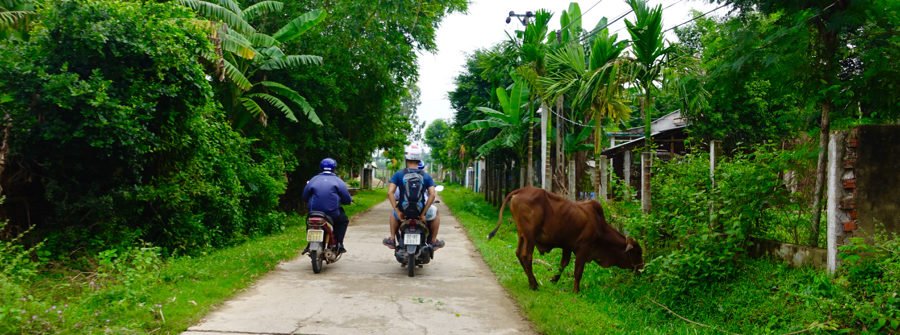

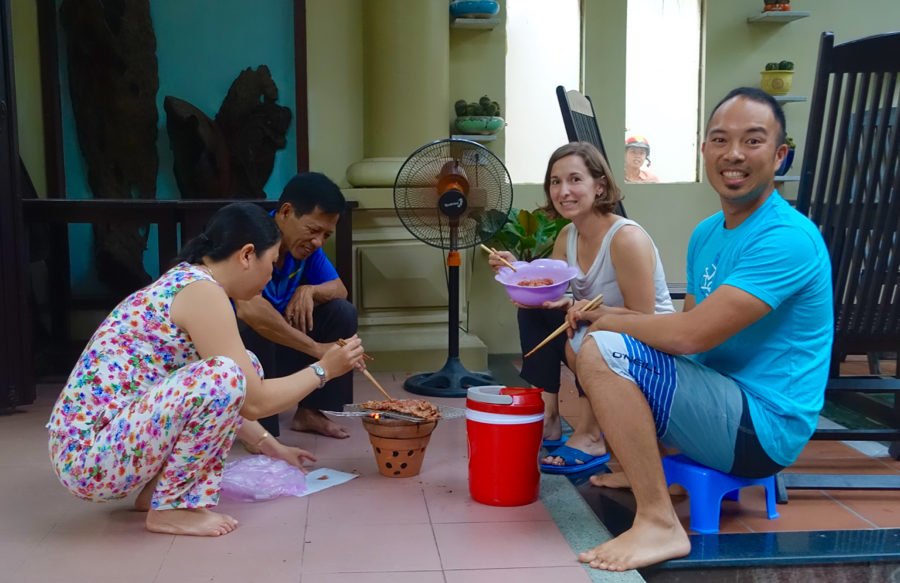



Our host was a big advocate for cross-cultural exchange and offered a number of activities guests could participate in with them throughout the week. Cooking class and family dinner, language lessons, visits to the family’s wood carving workshop in a nearby village.
Although they were all still working to improve their English, they were always super attentive and helpful whenever we needed anything. There were also a number of special things that we enjoyed with the family because we stayed longer than most guests.
We returned to stay with the family on three occasions, for a total of about 4 months over the years. Though they no longer host guests, we still get together with them when we’re in town. We strongly encourage you to seek out personal connections like this of your own in Hoi An!
Other Guest Houses and Hotels in Hoi An
We have also enjoyed staying at Yen Villa Homestay for their generous breakfast and nice neighborhood setting. Also the The View Homestay, for its central location and good value.
We’ve done quite a bit of research into accommodations in Hoi An, partly for tours we’re hosting and also so we’d know what to recommend to our readers.
We literally biked around to the best rated hotels, homestays, and villas in the top areas to see them for ourselves.
See our complete guide on where to stay in Hoi An here
Getting Around in Hoi An
Biking and walking are the best methods of transportation for most purposes. We happened to be in Hoi An in October, during the rainy season, so we quickly learned the value of carrying umbrellas and ponchos with us.
When the rain comes, it pours. You can get completely drenched in a matter of seconds, and roads can flood quickly as well. When we returned in February and March, rain was rare and not as heavy.
Motorcycles or moped rentals are another option, if that’s what you prefer. Helmets are required for motorized vehicles in Vietnam and it’s best to have an international license with motorcycle permit.
Taxis, Grab rideshare, and electric Hoi An shuttle buses are also options to get around Hoi An. Since Vietnam is built for motorbikes, cars have a little more difficulty getting through traffic, so always allow yourself extra time when traveling by vehicle.
The main taxi service in Hoi An are the green Mai Linh taxi cars, which you can always find at the corner of Tran Hung Dao and Le Loi.
To skip dealing with the language barrier and negotiating prices in cash, we usually prefer Grab – a rideshare app in Southeast Asia.
Grab drivers are not as common in Hoi An as they are in other cities, so don’t be surprised if you’re waiting a while for a driver to come. The Grab app often designates specific pick up points in Hoi An, so rather than call the driver to your current location, you may need to walk to the nearest pick up location.
New as of 2019 are electric shuttle buses, which usually hang out where Phan Chu Trinh meets Hoang Dieu street. You can hire a private shuttle for up to 8 people for sightseeing. Rather than meters like the taxis use, the shuttle will give you a fixed price in advance based on where you want to go or the duration of time you want to ride.
New in 2024 are turquoise electric vehicle taxis and motorbikes from Xanh SM. They also have a ride-share and rental app.
Rules of the road in Vietnam
Regardless of which vehicle you take, it’s important to observe the rules of the road carefully before jumping in, because they are different in Vietnam. Some say “there are no rules” but they’re actually more unspoken rules.
For example, right of way is usually determined by the size of the vehicle. Trucks beat cars, cars beat motorcycles, motorcycles beat bicycles, etc.
You must be very attentive and alert while driving or biking, but you can trust that others will be doing the same. Only go as fast as your ability to react to obstacles allows.
Everyone is responsible for the space in front of them, which means drivers don’t worry about what’s going on behind them because that’s someone else’s job. Be aware the people will not look when backing up a bike into the road, so you are responsible for slowing down and avoiding them.
People will also drive on the opposite side of the road for short periods and will take left turns before oncoming traffic has passed. So keep an eye out for people coming from every direction – not just the directions you might expect.
If you can handle that and stay calm, you’ll be good to go. Traffic tends to move relatively slowly, so stay calm, stay alert, and enjoy the harmony amidst chaos!
There are a number of places in Hoi An where paid bike parking is required – for example, to enjoy An Bang beach or to enter Old Town during bike-free times.
These spaces are watched over by an attendant, so they will charge a small fee. Otherwise, when you’re on any other street and parking at a restaurant, we found it was best to ask the restaurant staff where to park bikes because certain spaces can be off limits.
Compare and book Vietnam train tickets, bus tickets, and car hires on BookAway >
Our Top Tips for Intentional Travel in Hoi An
- Save all this info offline! It’s included with our curated Hoi An Map and Travel Guide.
- Try to make a local connection, whether it’s staying in a family homestay or hiring a local guide. We recommend doing the local-led Hidden Gems Hoi An Food Tour.
Also check out the experience listings on LikeLocal. - Shop at family owned, independent businesses and support local artisans when purchasing souvenirs
- Visit the Ancient Town during off-peak times, like early morning, to avoid crowds
- Take this article with you as your guide! Upload the article for free to your phone with the GPSmyCity app. (You can also upgrade to get an offline GPS map that guides you to each location we mention. Or subscribe to access all articles and maps for a full year.)
- For more guidance, see: how to have authentic, meaningful travel experiences in touristy areas and our simple rules for intentional travel series
- Protect your Hoi An trip with insurance – We’ve started using Nomad Insurance by Safety Wing for affordable evacuation, international medical, and trip coverage.

What travel restrictions and rules are in place in Vietnam?
Find post-pandemic travel updates for Vietnam here:
What you need to know about Vietnam travel right now
For further reading about Hoi An:
–Our Ultimate Hoi An Travel Guide + Curated Map
–Best food in Hoi An: Our favorite restaurants
–Where to stay in Hoi An
– What NOT to do in Hoi An
–5 Best day trips from Hoi An
–3 Day Hoi An Itinerary and Self-Guided Walking Tour Map
–Hue to Hoi An Motorbike Tour/Transfer
For other Vietnam destinations:
–Suggested Vietnam Itineraries: 10+ Days in Vietnam
–Best Central Vietnam Destinations
–Unique Things to Do in Da Nang Vietnam
–A budget guide to Ninh Binh
–A budget guide to Hue
–A budget guide to Hanoi
– Dalat Vietnam Itinerary
–A budget guide to Mai Chau Vietnam




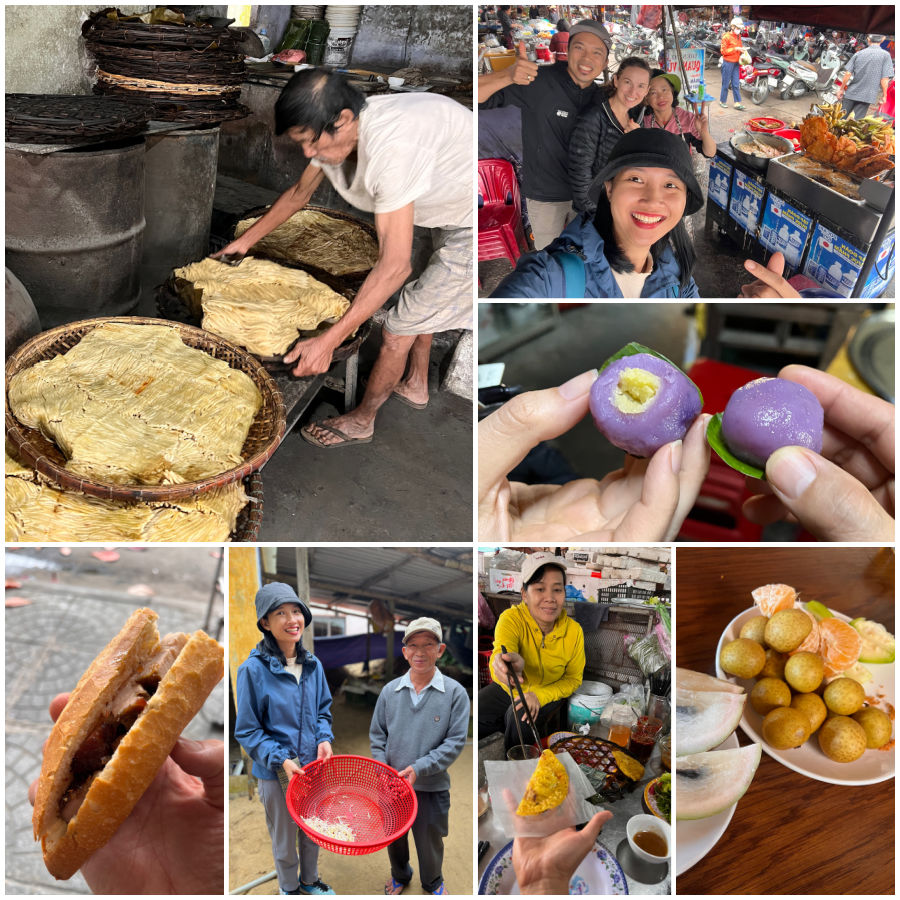
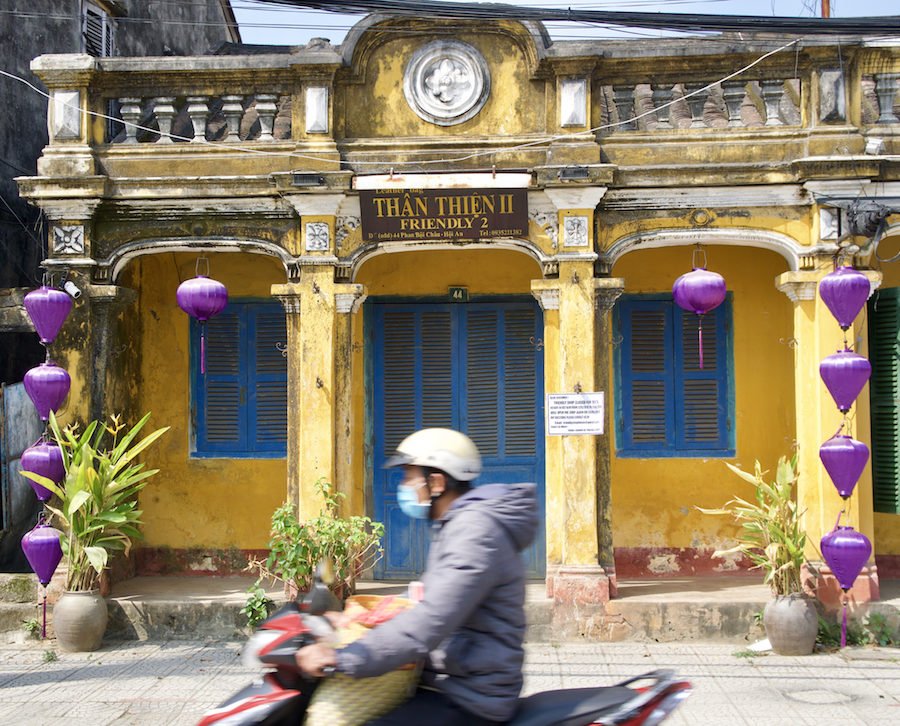
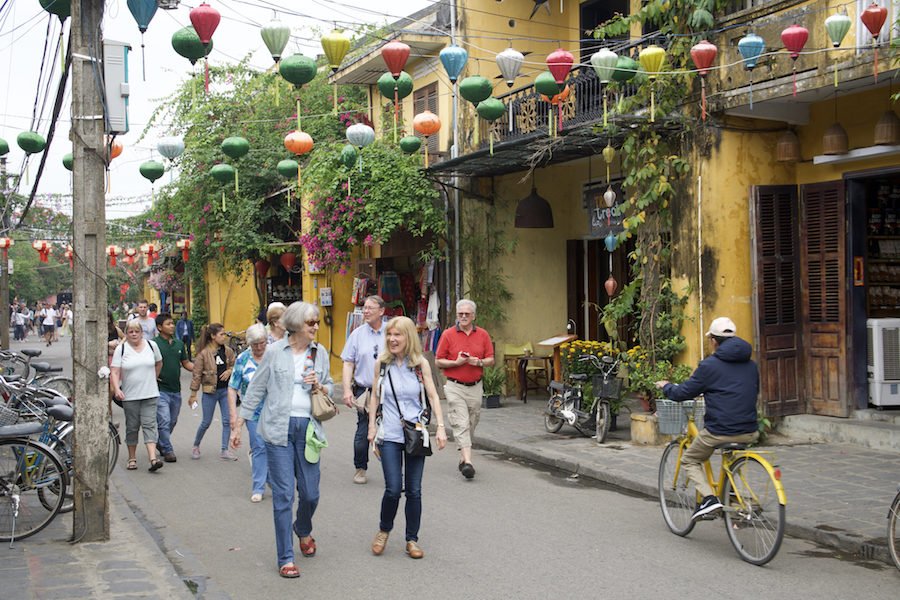


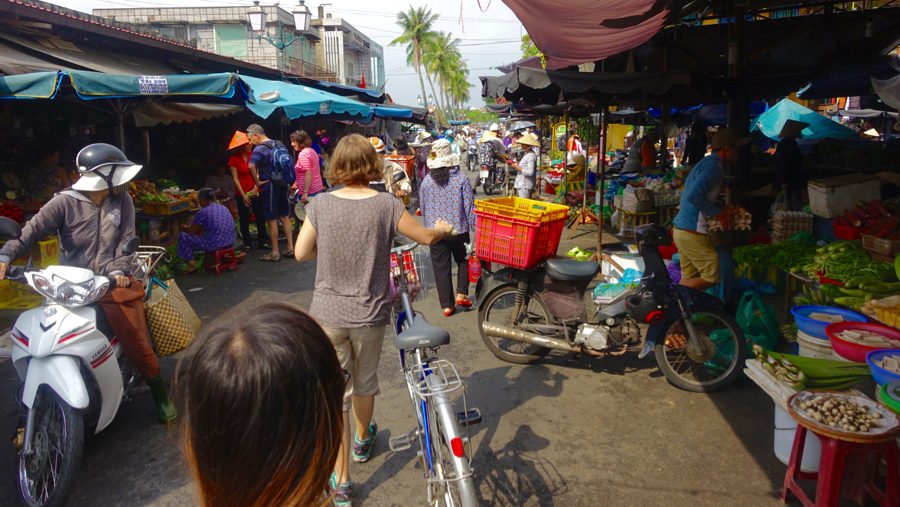
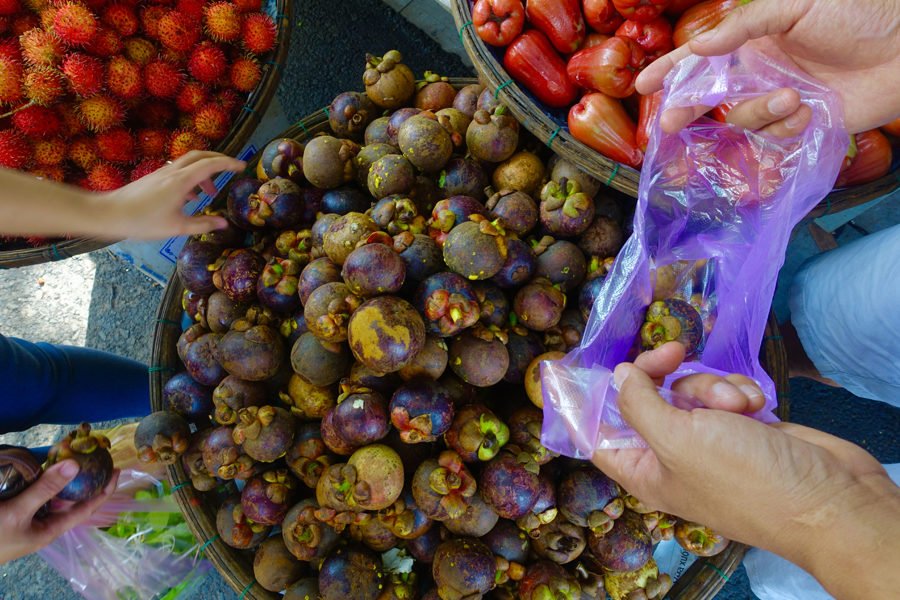

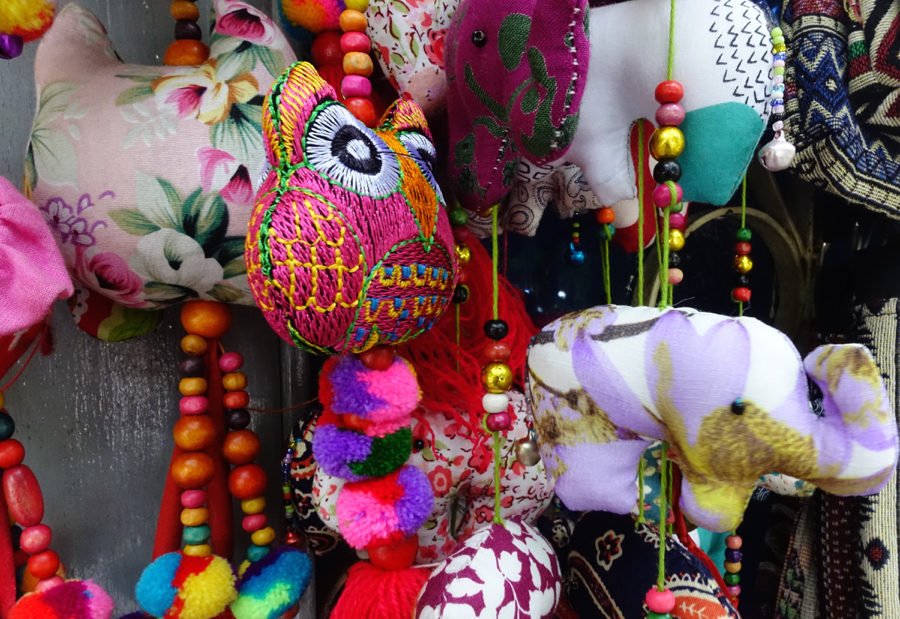


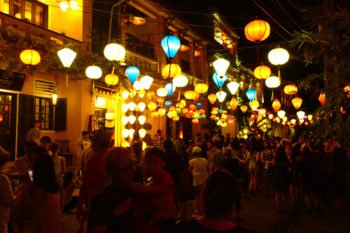

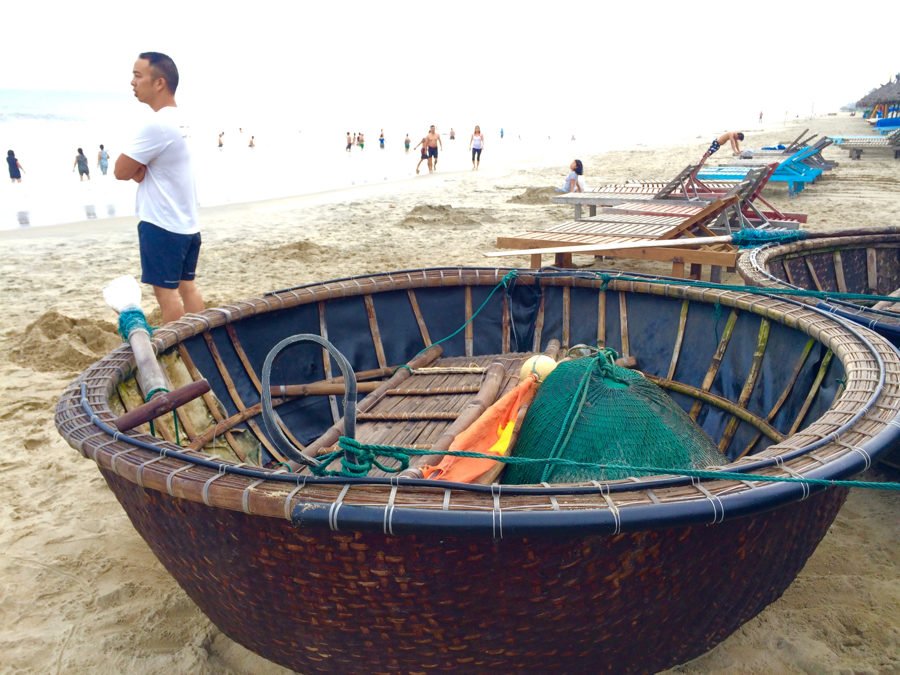
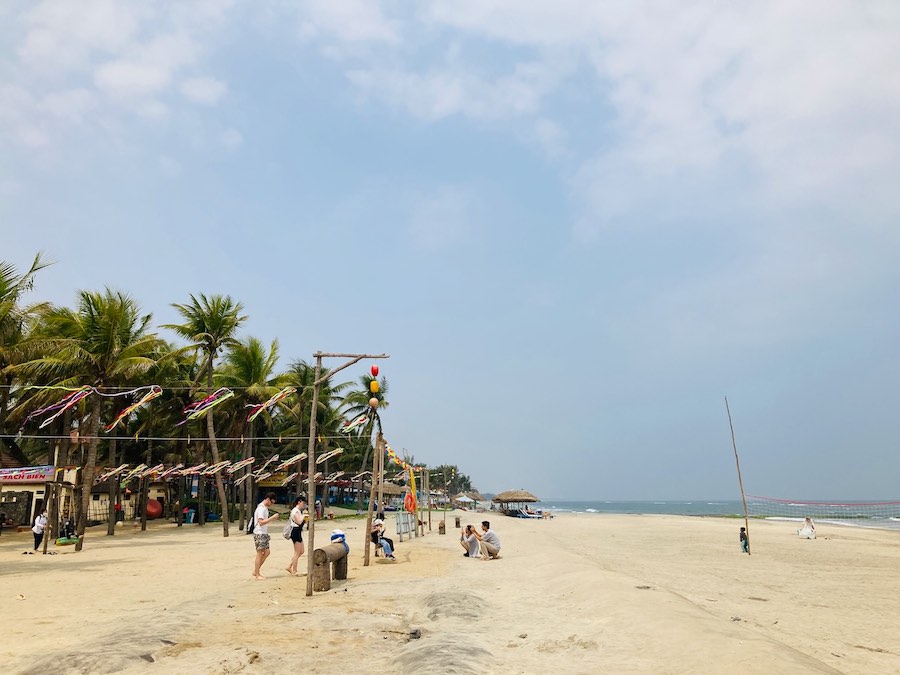

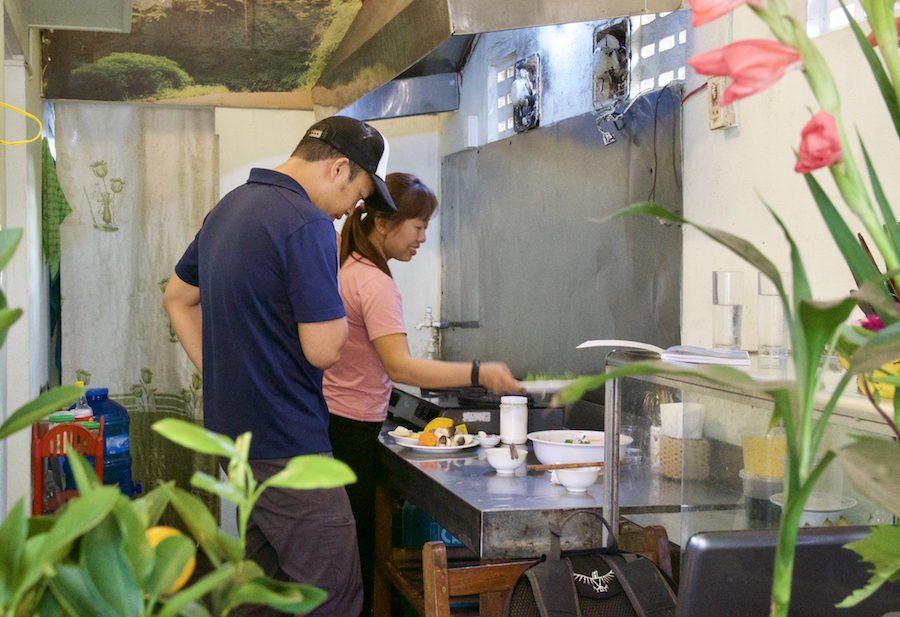


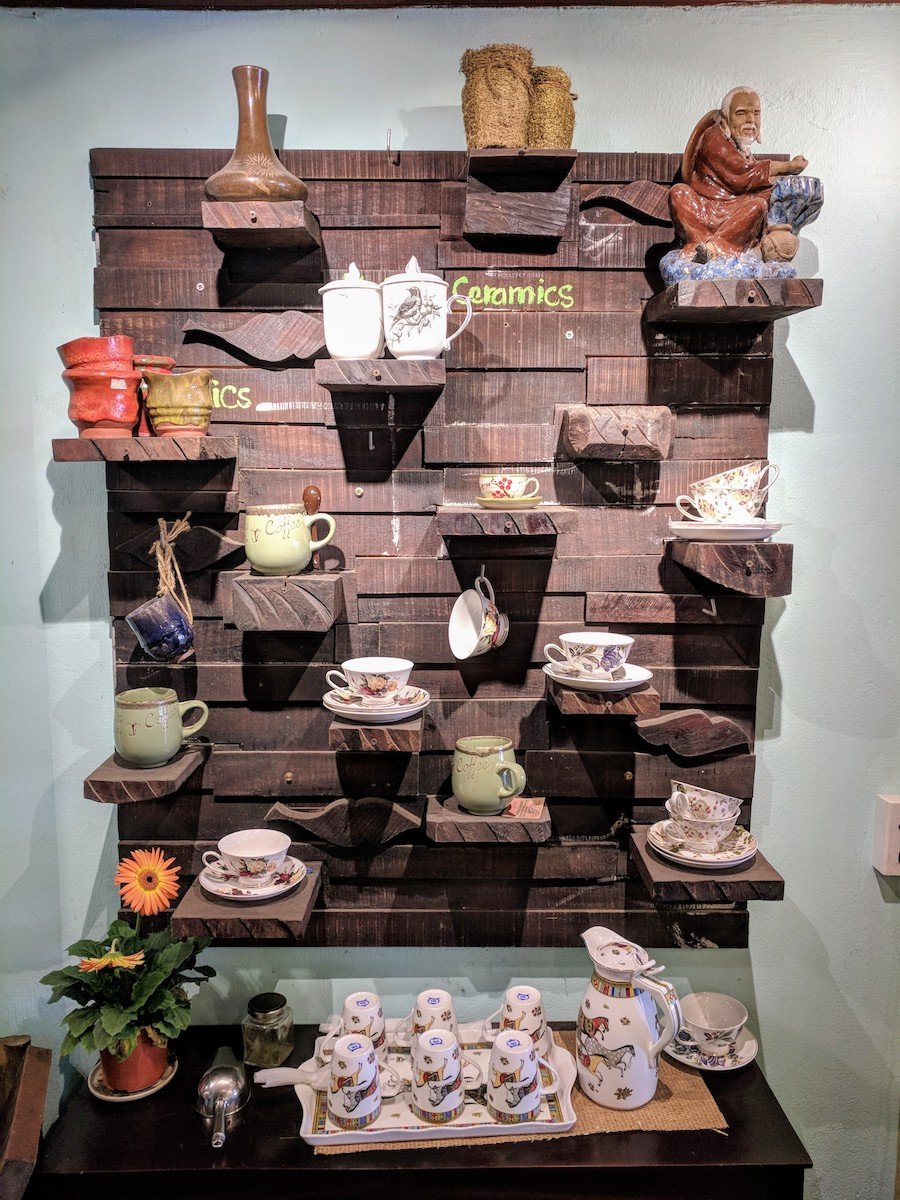
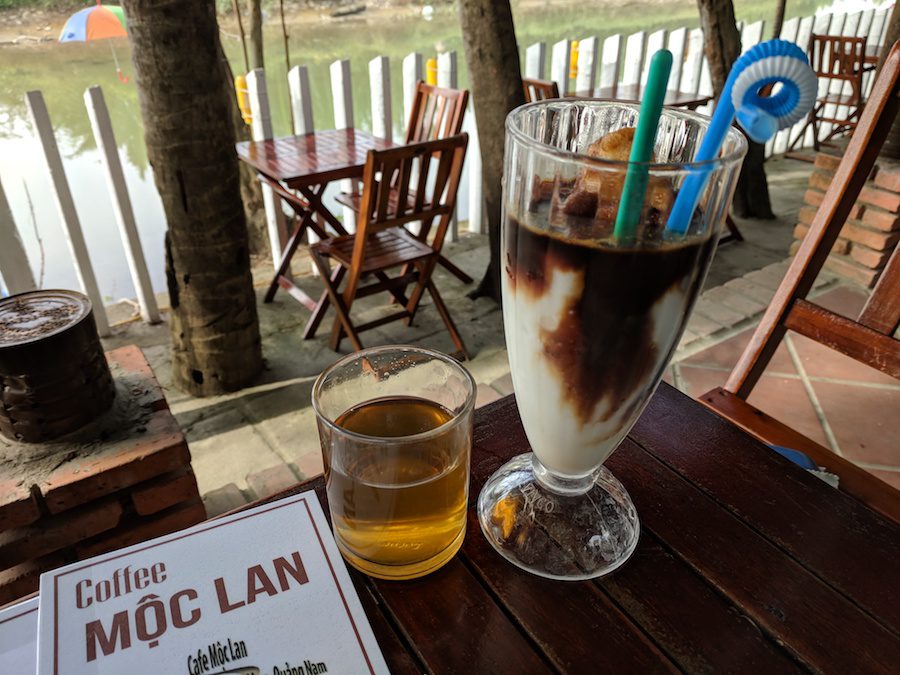

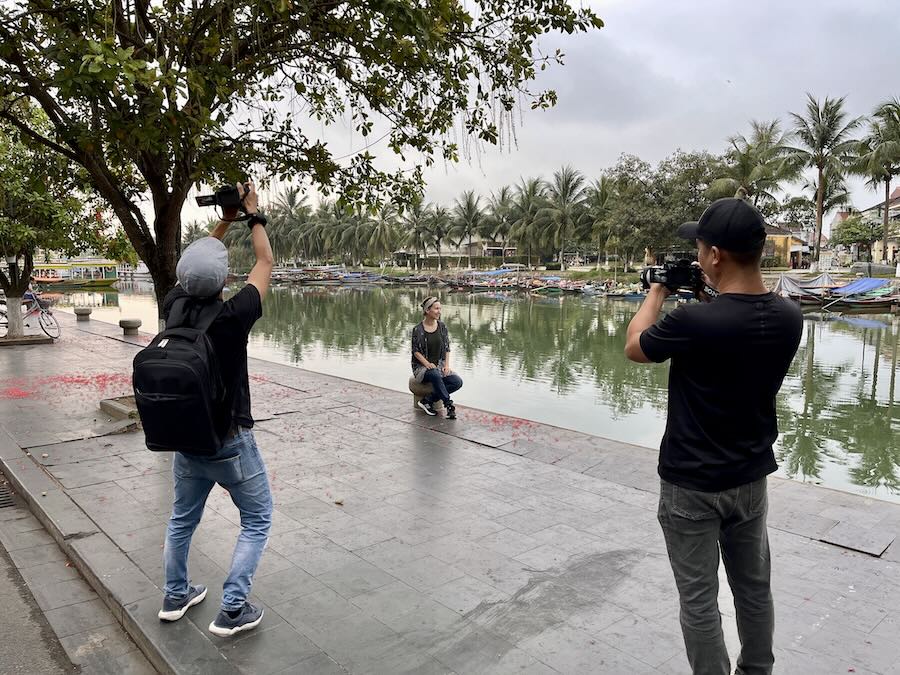
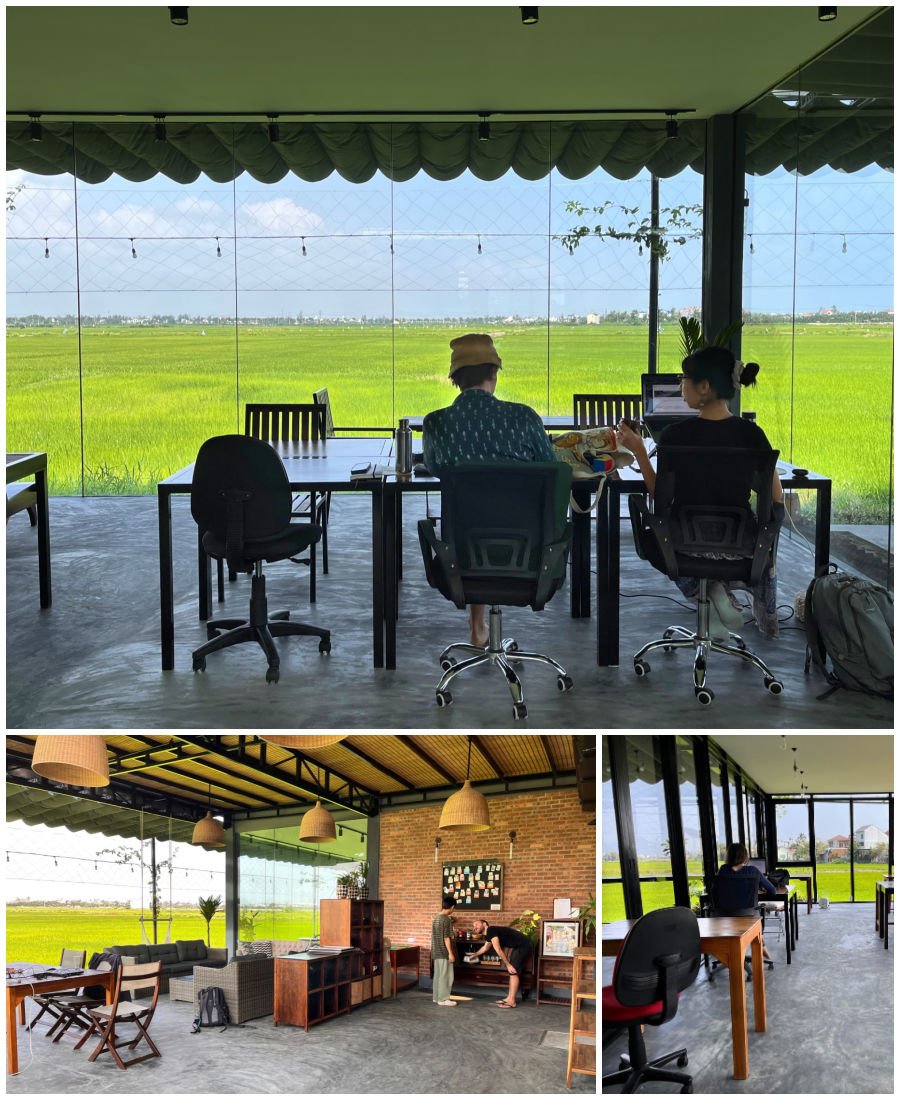



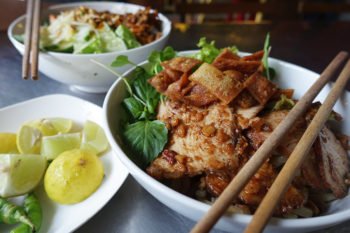
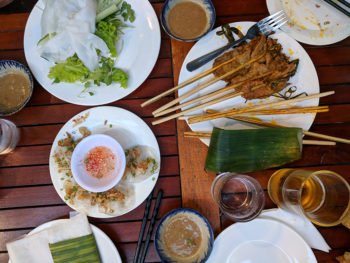




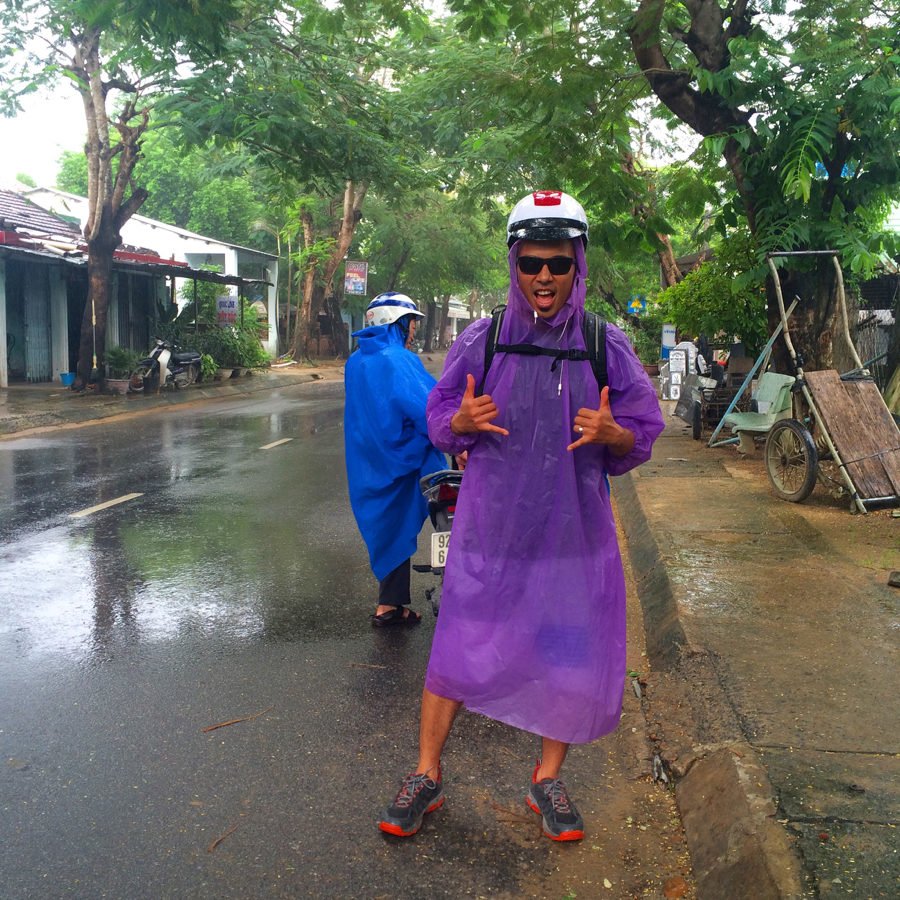
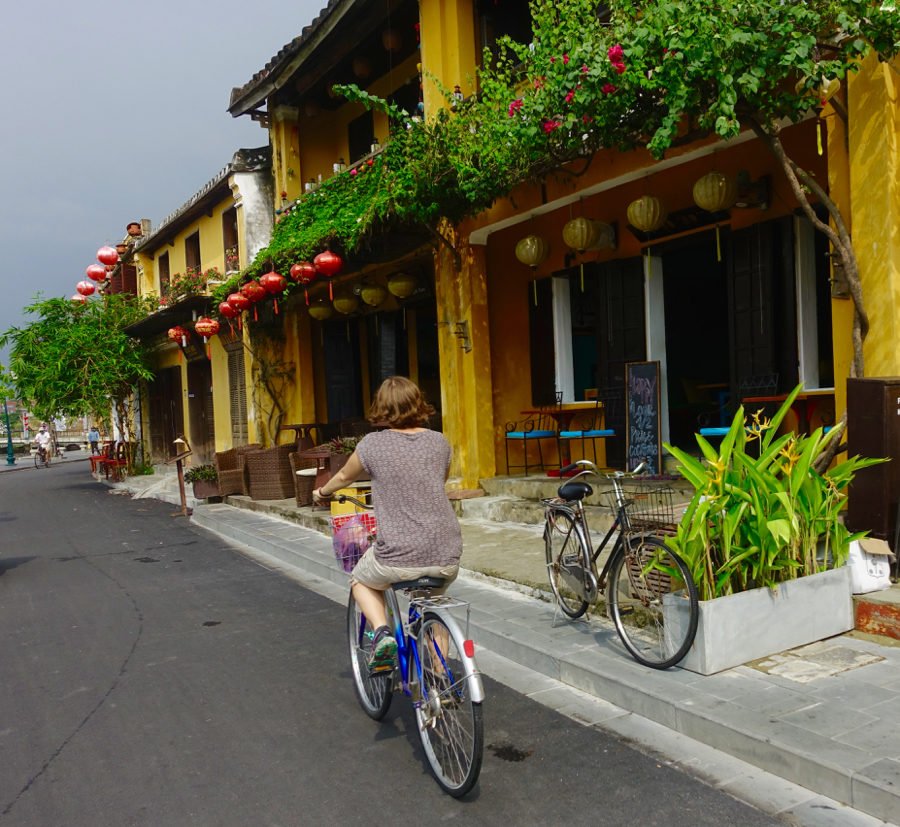

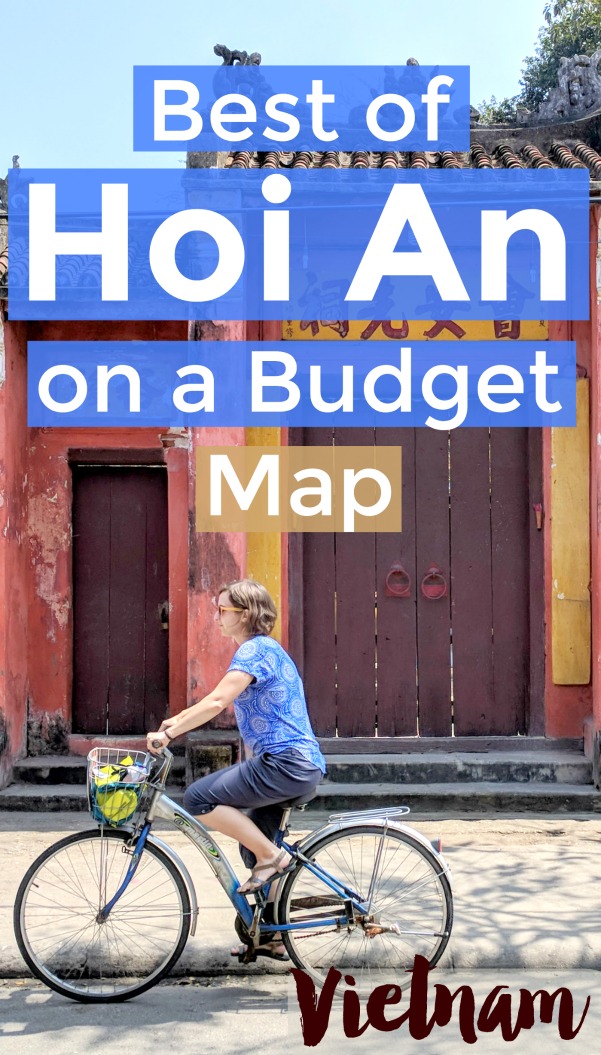
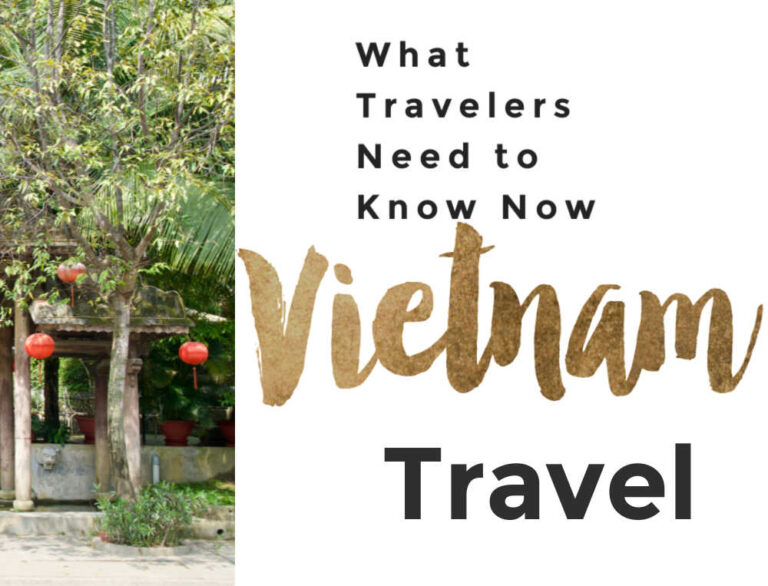

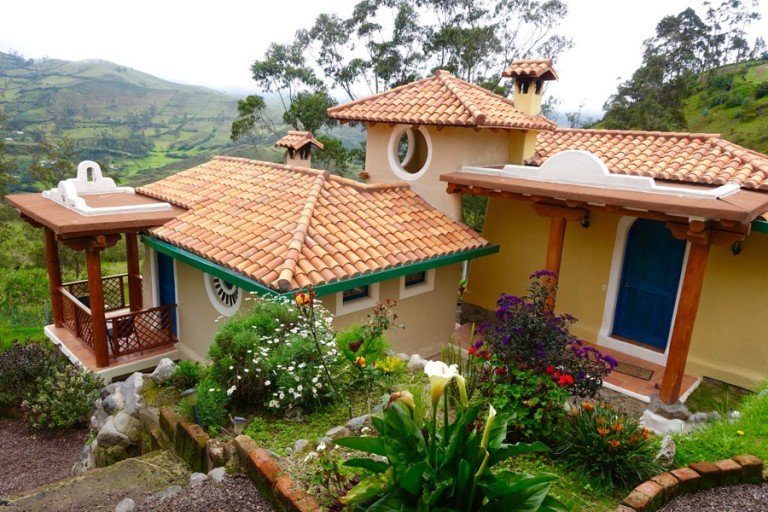



Nice Blog ! Hoi An, Vietnam, is a budget traveler’s dream—stunning lantern-lit streets, delicious street food, and rich history!
Thanks for taking the time to share your travel experience. I have to let you know that you incorrectly spelled the word “Bahn My,” It should by “Banh My.”
Thanks for reading! I’ve always seen it written bahn mi – maybe it’s regional??
Banh mi is the correct one, although some regions use banh my.
Beautiful post! There was this vegetarian restaurant, Minh Hien, that was so good that we had to go back a second time after trying a few other “chay” eateries that did not live up to Minh Hien.
I also recommend taking a motorbike trip up to Danang, the Hai Van Pass, and Marble Mountains if one didn’t stop there yet!
Thanks for the recommendations! We did the motorbike tour to get ourselves from Hue to Hoi An and it was pretty awesome.